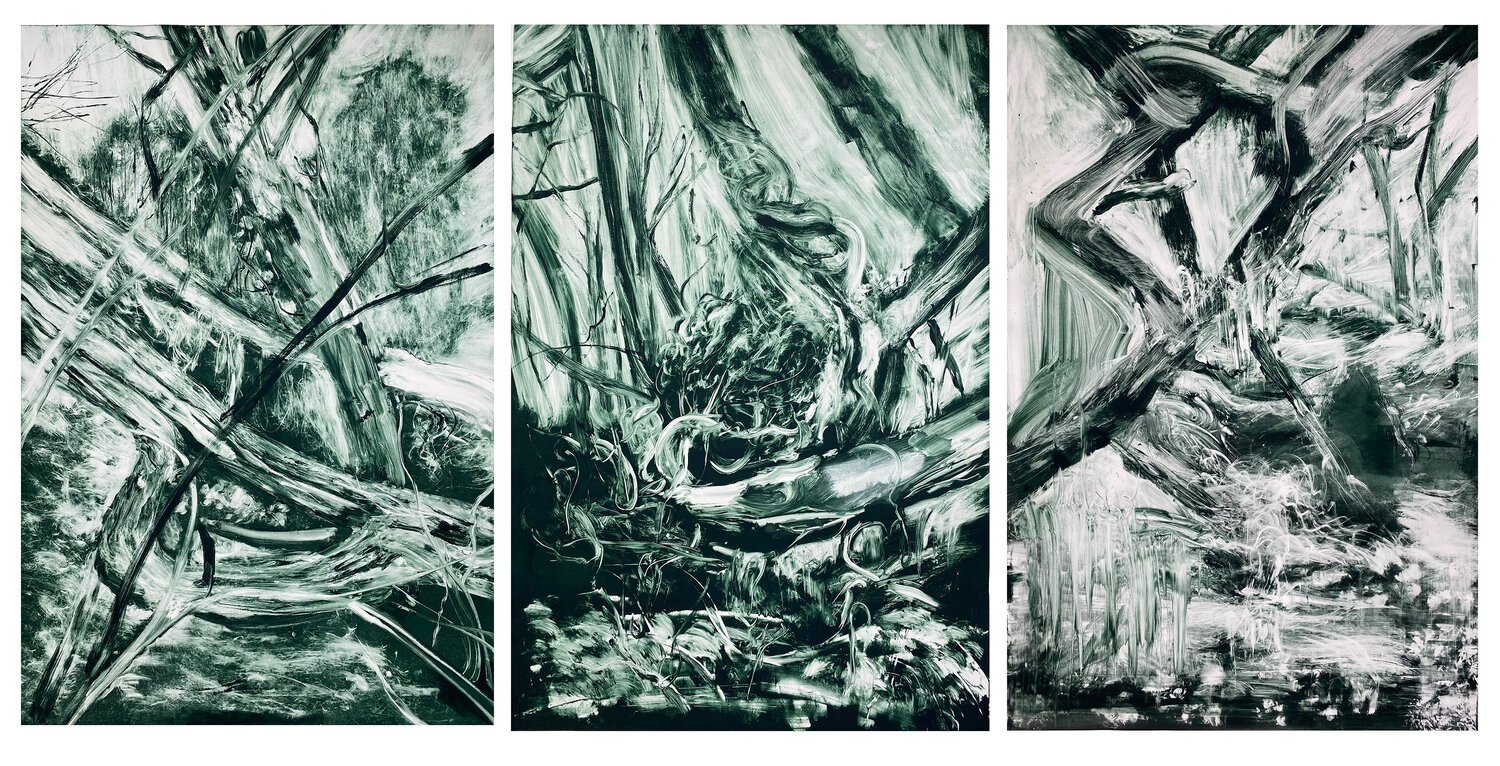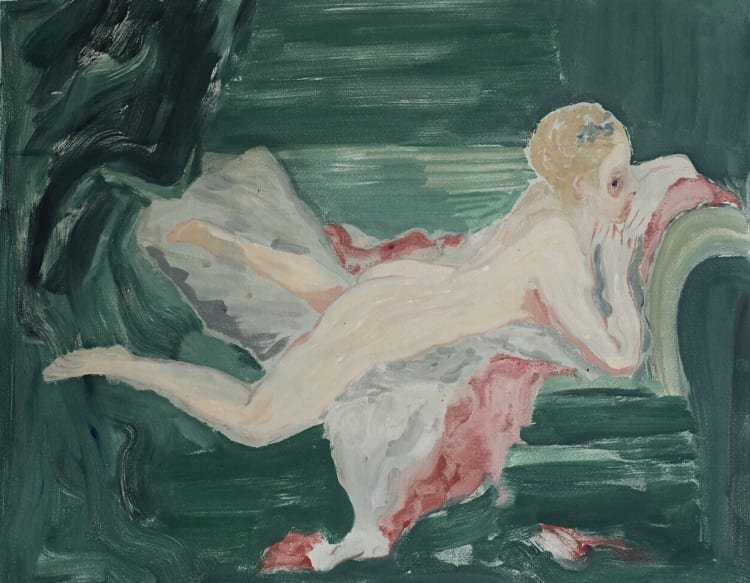
Monoprint
The main characteristic of a monoprint is that no two prints are identical, hence mono, though many of the same elements may be present. All or part of a monoprint is created from a matrix, etched plate, woodblock or such, whereas a monotype image is painted directly onto a smooth unaltered plate and then transferred to paper in a press. These prints are sometimes hand-coloured after they are printed.
Monoprint or Monotype?
Both monoprints and monotypes involve the transfer of ink from a matrix (copper plate, litho stone, silkscreen, etc) to a printable surface. For monotypes, the plate is featureless, containing no etched lines or engraved features that can pass on any series of characteristics to the prints. The artist therefore manipulates the ink on the plate, resulting in a one-of-a-kind print, that can have many painterly qualities.
Monoprints can be considered variations on a theme, usually the result of permanent features on the plate such as etched lines. Variations on the theme are made when the plate is inked differently prior to each print. Certain characteristics on the plate will be passed to each print, but the way of inking up, the colours, the size of prints can vary every time.

